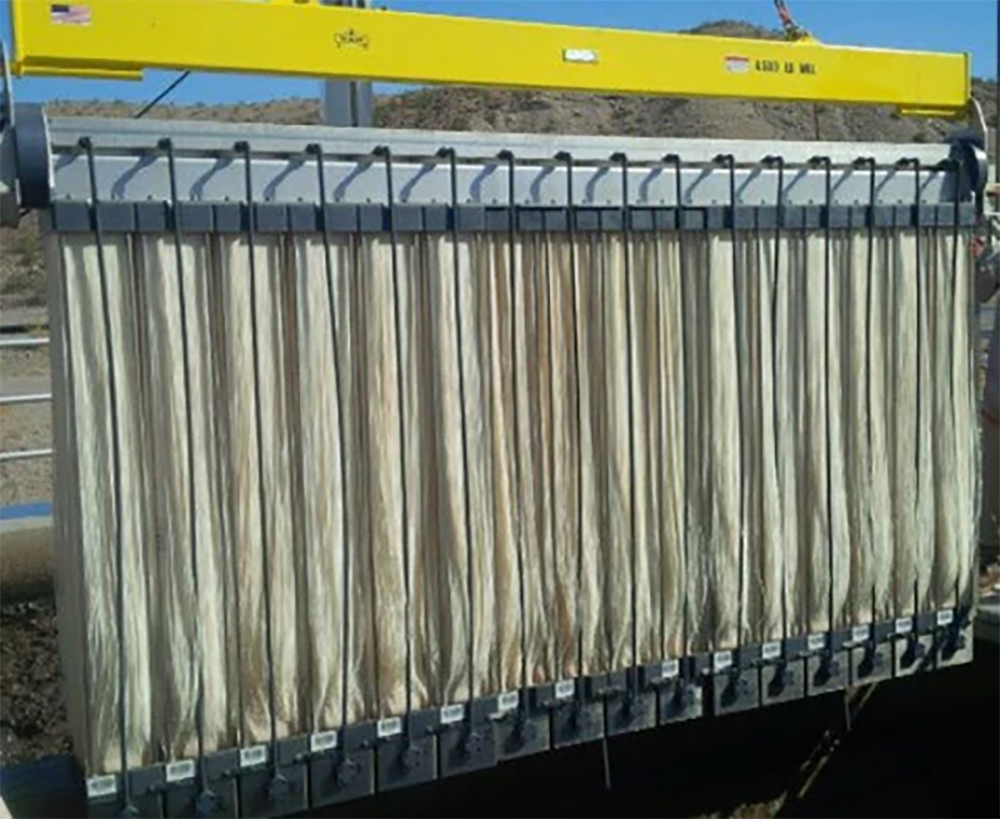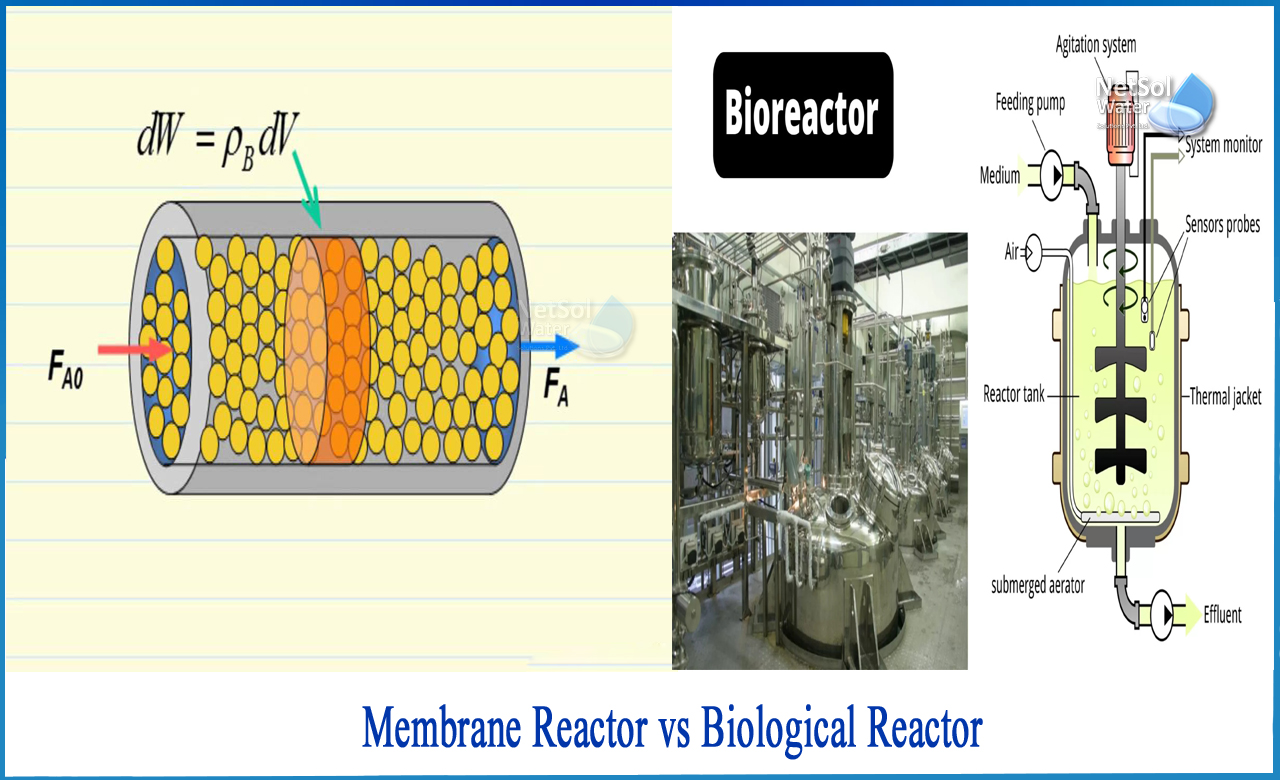How Membrane Layer Bioreactors Are Revolutionizing Water Filtration Solutions
The emergence of membrane layer bioreactors (MBRs) stands for a considerable improvement in the field of water purification, combining organic treatment procedures with cutting-edge membrane purification innovations. This integration not only improves the top quality of treated effluent however likewise addresses urban area restraints, making MBRs particularly suitable for largely populated locations. As international water scarcity increases, the role of MBRs in helping with safe and clean water reuse and lasting water management ends up being significantly critical. The ramifications of this innovation expand beyond effectiveness-- what challenges and opportunities exist in advance for its extensive application?
Summary of Membrane Bioreactors
Membrane bioreactors (MBRs) represent a significant advancement in water filtration innovation, as they integrate biological treatment processes with membrane layer filtering. This integration boosts the performance of wastewater therapy by using microbes to deteriorate natural contaminants while at the same time utilizing semi-permeable membranes to different treated water from suspended microorganisms and solids.
The MBR system generally consists of a biological activator where the microbial population metabolizes impurities, complied with by a membrane filtering unit that preserves biomass and enables just clean water to pass through. This twin performance results in greater effluent quality contrasted to conventional therapy methods. MBRs can be run in both batch and continuous circulation settings, using versatility in design and application.
Furthermore, MBRs are characterized by their small impact, making them appropriate for metropolitan settings with room restrictions. Membrane Bioreactor. They additionally enable the healing of water for reuse, thus adding to water sustainability efforts. While MBR modern technology has gotten appeal in community and commercial applications, its operational intricacies and power needs demand cautious factor to consider during application. Generally, MBRs go to the forefront of boosting water treatment efficiency and high quality, showcasing the possibility for cutting-edge services in ecological monitoring.
Benefits of MBR Technology
The combination of organic treatment with membrane filtering uses countless advantages for water purification procedures. Among the key advantages of Membrane layer Bioreactor (MBR) innovation is its capability to properly eliminate both natural and not natural contaminants, causing top quality effluent. The membranes act as a physical obstacle, protecting against put on hold solids and virus from passing through, which enhances the total safety and security and dependability of treated water.
Additionally, MBR systems require a smaller footprint compared to standard therapy techniques, permitting a lot more reliable area usage. This compact layout is especially beneficial in urban settings where land is restricted. MBRs likewise demonstrate functional versatility, accommodating differing influent top qualities and flow rates without substantial performance degradation.
Furthermore, the procedure supplies enhanced nutrient removal capacities, particularly for nitrogen and phosphorus, which are critical for preventing eutrophication in obtaining waters. The minimized sludge production connected with MBR innovation likewise translates to reduce disposal costs, making it a cost-efficient service in the lengthy run - Membrane Bioreactor. Generally, the advantages of MBR innovation position it as a leading option for cutting-edge and sustainable water purification systems, attending to both ecological and economic worries
Applications in Water Filtration
Applications of Membrane Layer Bioreactor (MBR) technology in water purification are impactful and diverse, dealing with numerous treatment requires throughout multiple markets. MBRs effectively integrate organic therapy processes with membrane layer purification, making them optimal for metropolitan wastewater therapy, industrial effluent administration, and even safe and clean water reuse initiatives.
In community settings, MBRs are progressively employed to enhance the high quality of treated wastewater, enabling compliance with strict discharge guidelines and facilitating the recycling of water for irrigation and non-potable uses. Their portable layout additionally makes them ideal for city environments where space is limited.
Industrially, MBR technology is utilized to deal with procedure water and wastewater, specifically in markets such as food and drink, drugs, and fabrics. By successfully eliminating contaminants and suspended solids, MBRs aid industries minimize ecological influences while recuperating important resources from wastewater streams.
Moreover, MBRs are gaining traction in decentralized water therapy applications, where small-scale systems can be deployed in remote locations or creating regions. This adaptability enables communities to attain lasting water management remedies, boosting accessibility to clean water while reducing dependence on conventional therapy techniques.
Situation Research Studies and Success Stories

In an additional click to read instance, a textile manufacturing center in Bangladesh embraced MBR modern technology to address its wastewater obstacles. The system minimized chemical oxygen demand (COD) degrees from 1,200 mg/L to less than 100 mg/L, therefore fulfilling regulative criteria and considerably minimizing ecological effect.
The College of Cape Community's MBR setup has actually confirmed efficient in dealing with greywater for non-potable reuse on campus. This job not just conserves drinkable water yet also functions as an educational version for lasting practices.
Moreover, a seafood processing plant in Norway used MBR innovation to treat effluents including high degrees of raw material, achieving over 90% contaminant removal. These instance studies highlight MBR innovation's convenience and its vital role in her response improving water quality across diverse applications.
Future of Water Treatment Solutions
As worldwide water deficiency and air pollution challenges magnify, innovative water treatment services are ending up being significantly vital to ensure sustainable access to tidy water. The future of water therapy exists in the assimilation of innovative modern technologies that enhance the efficiency and performance of purification processes. Membrane bioreactors (MBRs) are at the forefront of this evolution, combining organic therapy with membrane filtering to produce premium effluent appropriate for various applications.

Emerging fads such as resource recovery from wastewater, including nutrients and power, will even more transform therapy facilities right into environment-friendly hubs. Furthermore, advancements in nanotechnology and membrane layer materials promise boosted performance and durability of filtering systems.

Conclusion
In verdict, membrane layer bioreactors represent a substantial advancement in water filtration innovations, properly integrating organic treatment with innovative membrane purification. The numerous advantages, including improved effluent quality and lowered spatial demands, make MBRs particularly appropriate for city applications. Their role in potable water reuse and lasting water management highlights their value in addressing worldwide water deficiency challenges. Continued study and development will certainly further improve the efficiency and fostering of MBR innovation, making certain a durable future for water therapy remedies.
The introduction of membrane layer bioreactors (MBRs) stands for a substantial innovation in the area of water filtration, combining biological treatment procedures with sophisticated membrane layer purification modern technologies. As international water deficiency intensifies, the role of MBRs in promoting potable water reuse and lasting water monitoring comes to be significantly important. They additionally allow the healing of water for reuse, therefore contributing to water sustainability campaigns.As global water deficiency and pollution challenges magnify, innovative water therapy remedies are ending up being progressively vital to guarantee sustainable accessibility to tidy water. Their function in pop over to these guys potable water reuse and lasting water administration highlights their value in attending to global water deficiency obstacles.